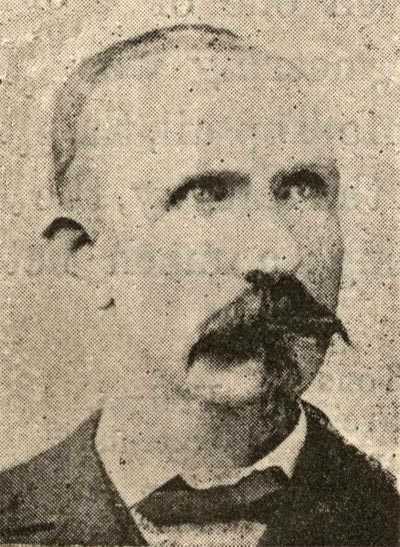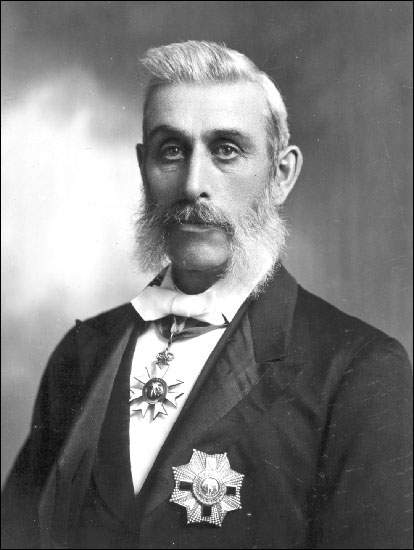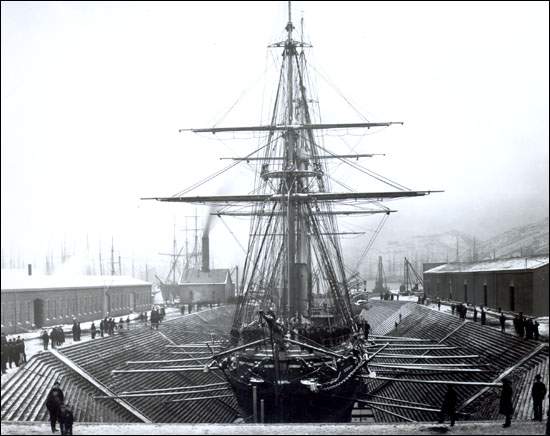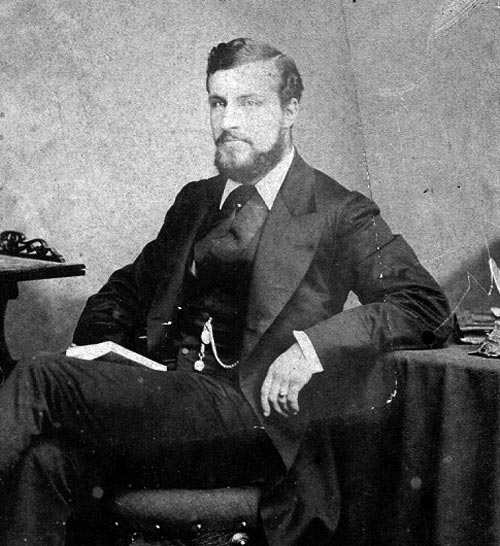The Reid Lands
Few issues surrounding the Newfoundland Railway attracted as much controversy as the extensive lands grants made under various construction contracts between 1893 and 1909. Most controversial was the railway contract of 1898, a wide-ranging vision of Newfoundland's future prospects for development that was ultimately rejected by the electorate.
Throughout North America, extensive lands grants were offered as an incentive to railway contractors to operate the new lines, particularly where the proposed railways crossed extensive uninhabited regions. Under the first Newfoundland railway contract, that of 1881, operations were to be subsidized at $180,000 annually for 35 years plus grants of 5,000 acres per mile operated. This was patterned after the Canadian Pacific Railway contract of 1880. The question of "railway lands" was touchy from the first: during the location survey, crews were halted by irate citizenry at Tilton and at Foxtrap, as rumours spread that the railway would appropriate the private land in its path.
With the failure of both the original company and the government to achieve significant construction progress, in 1889 the government decided to employ a contractor to build the line at a fixed price and it was on such terms that R.G. Reid and G.H. Middleton first became involved.

Initial Land Grants
Reid (now minus his partner) was first offered land grants in 1893, in connection with his undertaking to operate the Placentia branch and the main line west from Placentia Junction to Port aux Basques for ten years. He received grants of 5,000 acres per mile of track operated. In keeping with Canadian practice the grants were to be taken in alternating blocks on either side of the line, eight miles deep with one or two miles frontage. Where land along the railway was deemed unsuitable, Reid had the option of selecting lands elsewhere.
Additional land grants, under the 1898 contract, were more controversial. Completion of the mainline threw thousands out of work, and the government of Sir James Winter was anxious to proceed with development of the interior, in which Reid had a large stake, as well as to secure continued operation beyond 1903.

1898 Contract
As signed on 15 March, the contract of '98 provided for Reid to extend his operation from 10 to 50 years (from 1893), for an additional 5,000 acres per mile. The contract also set out train schedules and provided for the construction of a new St. John's terminal and headquarters. Reid was to purchase the St. John's dry dock, operate the government telegraph for 50 years, and provide and operate eight coastal steamers at an annual subsidy. At the end of 50 years Reid's heirs were to own the railway outright, in return for an immediate payment of $1 million and the return of half the lands granted under the 1893 contract. Reid now owned 4,124,000 acres (approximately 6500 square miles) becoming one of the world's largest private landowners. The continuing provision that Reid could select lands where rail-side proved unsuitable meant that "Reid lots" were scattered all over the Island.

The contract of '98 almost immediately became mired in controversy, meeting opposition from the imperial government and the governor, with the Opposition in the House of Assembly being led by Robert Bond. The consensus that (in the words of historian J.K. Hiller) "in the small world of Newfoundland Reid would become too powerful," was expressed throughout the country. Popular opposition again crystallized around the lands grants. In pursuit of development capital, Reid secured blanket grants to some of the railway lands. Prior title would be recognized if it could be proven, but the onus was on the other claimants. That some of the blanket grants included community burial plots enabled Bond's Liberals to claim that "Reid even owns your graves" and Bond demanded renegotiation after winning a general election on the issue in 1900. Reid was ultimately forced to renegotiate, when he approached the Bond government for legislation to allow assets under the contract (which had been signed with R.G. Reid personally) to be assigned to a limited liability Reid Newfoundland Company.

The re-negotiated contract, signed 2 August 1901, had as one important modification that the government would continue to own the line, that the $1 million would be returned to Reid with interest, and that 1.5 million acres of blanket grants would be returned to the Crown for a further payment of $850,000.
The 2.5 million acres of remaining "Reid lands" were added to substantially under the branch line contracts of 1909-15, at 4000 acres per mile based on a 40-year operation.
Railway Settlement Act of 1923
Under the Railway Settlement Act of 1923, whereby the government assumed operation after half the projected life of the contract(s), the Reids were permitted to keep their lands, despite sentiment in some quarters that they ought to be forced into default and forfeit. But by this time the Reid lands had indeed become enmeshed with the development prospects for Newfoundland.
Timber Rights
The acquisition of timber rights on the railway lands had already been key to the establishment of a pulp and paper mill at Grand Falls by the Anglo-Newfoundland Development Company beginning in 1905. By 1920 operating losses had forced the Reids to abandon some of their most ambitious developments. But Reid timber and water rights about Grand Lake and the Humber River drainage were central to a proposed pulp and paper mill development at Corner Brook. The "Humber Deal" was Newfoundland's brightest prospect in the post-War era - the Settlement Act of 1923 recognized that this project could not continue without the Reids and their lands. In 1926 the Reids were forced out of the development of Corner Brook, losing in the bargain 1.2 million acres which had been put up as security. Having been involved in the promotion of two major mills which were now being operated by other parties, H.D. Reid next proposed a "third mill" based on the resources of remaining block of lands in the about Gander Lake. To promote the "Gander Deal" and purchase additional timber licenses the Reid Newfoundland Company borrowed heavily. The company was placed in receivership in 1931, and in 1938 the receivers sold the Gander properties to Bowater-Lloyd.
The Company still held substantial acreage, as well as retaining mineral rights to many tracts where surface rights had been sold. The Company was reorganized and came out of receivership in 1956. In 1973 its holdings still amounted to 500,000 acres, when Ian J. Reid offered to sell them to the province. The province opted to purchase only the surface rights, for $4.15 million.




